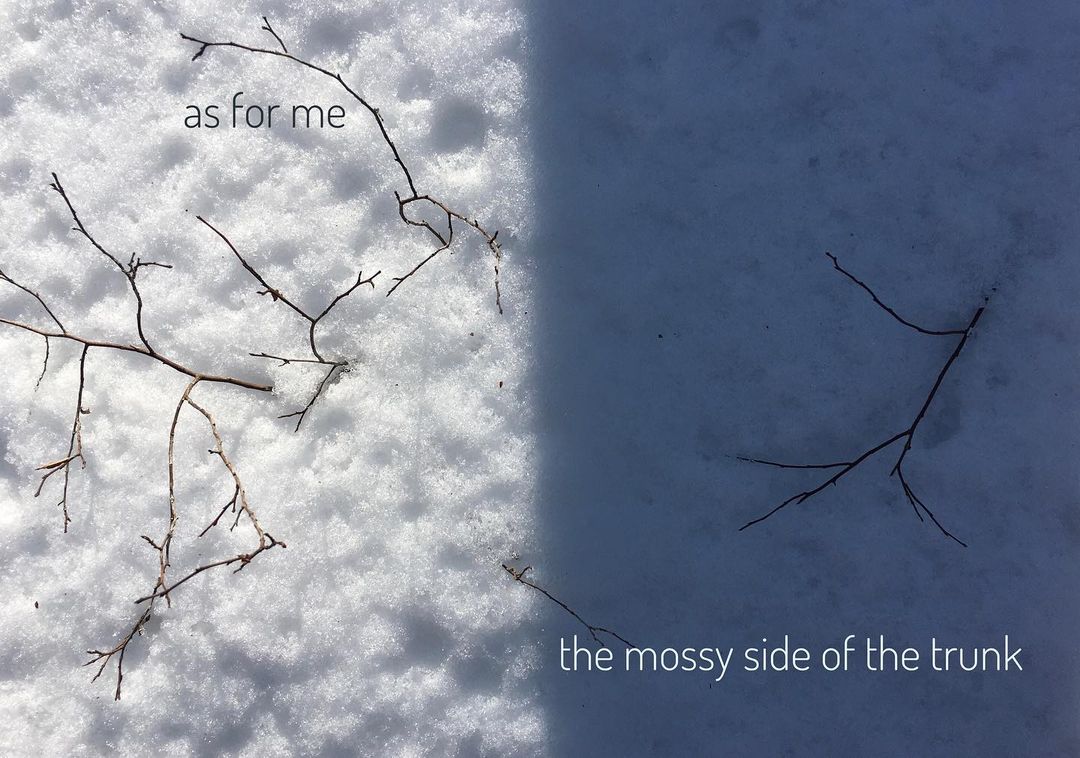My long-running photo blog has gone through a couple of re-inventions over the years as my interests have shifted. On New Year’s Day, I decided it was time to re-invent it once again, and start featuring photo haiga (A.K.A. shahai), since I’d already starting incorporating haiku text into images on Instagram. In a way, this isn’t new territory for me: back in 2008-2009 I edited a short-lived journal called Postal Poems that tried (and mostly failed) to get poets to create haiga-like images incorporating text (mostly micropoetry, but not necessarily haiku). And I’ve been incorporating haiku into videopoems for years, usually as text-on-screen.
The difference now is I have a somewhat more sophisticated idea of what haiku is or could be. For decades I was hampered by too much formal education, convinced I knew what haiku was by scattershot reading of mostly mediocre translations in the course of obtaining a comp lit degree focusing on Japanese and Chinese, which included a year abroad in the Kansai region of Japan. The latter did leave me with a healthy aversion toward Japonisme in all its manifestations, important to my growing realization that preserving the possibility of at least occasional originality in a tradition-bound art-form paradoxically requires an openness to the avant garde. As I noted this morning in a tweet reply to the Norway-based poet and blogger Ren Powell, my first real introduction to so-called gendai (modern) haiku was the Haikunaut issue of Cordite in 2009. From there I discovered Roadrunner/R’r journal and the 2011 anthology Haiku 21 from Modern Haiku journal, and it was off to the races.
But for some reason I persisted in keeping text off of the photos at Woodrat Photohaiku, even as the accompanying haiku themselves slowly improved. I’m nothing if not a creature of habit. I think it was mostly the cumulative effect of seeing other haijin posting photo haiga on social media, especially Instagram, that finally broke down my resistance. And I discovered that a photo editing app I’d been using for several years, Snapseed, had an easy-to-use text tool, allowing me to make and post haiga directly from my camera (allegedly also a phone). I could even copy and paste the text directly from the Notes app, a nearly frictionless haiga composition process for the digital age.
I’ll still be using what I deem to be the first line/semantic unit of the haiku as a post title, with the remainder of the text below the image, for continuity’s sake with the archive and to help those using assistive technology. But I’ve also begun appending additional thoughts to some of the posts, which represents another radical change for the blog: process notes, interesting out-takes, notes on potentially obscure details of the content, etc. And having text both beside as well as within the image allows me to present it in contrasting ways, which I like because sometimes a haiku can have quite different effects depending on how it’s arranged, in one line or several, and I feel readers should be able to choose which they like the best.
This may seem like much ado about nothing, considering how few actual readers the blog has, but to me, its small readership is one of the things I most enjoy about it. It makes it feel more like a sandbox where i can indulge my inner child and don’t have to take things too seriously. For a writer, that’s one of the real, unsung pleasures of blogging in general.



